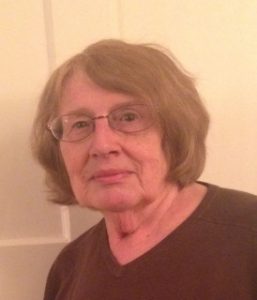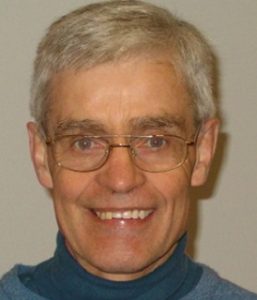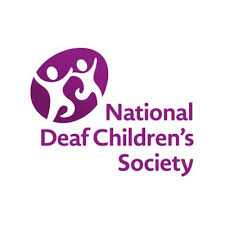The profession of Teacher of the Deaf: status, roles and training
by Susan Gregory and Ted Moore
(see also other parts of this website which include material relevant here: see sections on ‘Schools for the deaf’, ‘The education of deaf pupils in mainstream schools’, ‘Deaf children under two years: diagnosis and early intervention’ and ‘Deaf pupils with cochlear implants’)


The beginnings of formal deaf education
While this website is concerned with a history of deaf education from 1960, it is worth reminding ourselves that deaf education and the profession of Teacher of the Deaf have a long history. Schools for the deaf first appeared in the 18th century in the UK, France and Germany though even before that there were many individual teachers with just one pupil. In the UK public education of deaf pupils began in Scotland when a deaf pupil was accepted into the Edinburgh School set up by Thomas Braidwood in 1760. He subsequently moved his academy to Hackney London in 1783. At about the same time John Watson, a cousin of Braidwood, set up a school for six deaf pupils in a house on Bermondsey, London in 1792. The foundation of the first school for the deaf to be built was laid in 1807 in the Old Kent Road, London, which opened in 1809 (see McLoughlin 1987 for a fuller description of these developments).
Throughout the nineteenth century, many large institutions grew up with responsibility for the education of deaf pupils. Most large cities had one. In 1893 education for all deaf children over the age of seven years was made compulsory in the Elementary Education Act (Blind and Deaf Children). Following the 1880 Congress of Milan, the approach to the education of deaf pupils was almost totally oral (see sign language section of this website).
Early days in the training of Teachers of the Deaf
In the early days of formal deaf education, Teachers of the Deaf were employed in schools for deaf children, many of which were largely residential. Following the 1893 Act there were criticisms of the poor status and qualifications of Teachers of the Deaf which resulted in 1895 with the formation of the National Association of Teachers of the Deaf (NATD). Until then there had been three separate bodies each giving their own certificate for the training of Teachers of the Deaf. Two were based on exclusively oral approaches, and the third awarded certificates to students using any form of communication. NATD insisted that these three bodies came together to produce one diploma and this was achieved in 1909. However, training remained piecemeal and usually the responsibility of schools.
The first University course for the training of teachers was set up at Manchester University (then Victoria University) and the first group of four students received their qualification certificates in 1920.
The training of Teachers of the Deaf from 1960
By 1960, Manchester University was training about 75 students a year who took the certificate course to become Teachers of the Deaf. As a general rule, about 60 went on to teach in England and Wales and 15 returned to the other countries from which they had come. In addition, there were other students taking related courses. However, there was developing an urgent need for more teachers for a number of reasons; the growing number of Partially Hearing Units requiring staff, the growth of peripatetic services requiring qualified Teachers of the Deaf and the planned intention to reduce the numbers in classes of deaf pupils from ten to eight. The number of teachers being recruited for training was not enough to meet this need. This was not due to a problem with recruitment as there were around 130 applications a year for the Manchester course. Professor Ewing, who had set up the Manchester course, proposed that there was a need for another centre to be developed to allow greater numbers of students to train. In 1965 a course at the Institute of Education, London University was set up under Darcy Dale. In time, other courses developed at Lady Spencer Churchill College, Oxford, and Moray House, Edinburgh in 1969, and later Birmingham University in 1989, and Leeds University in 1992.
The courses for training Teachers of the Deaf were very different in the1960s from those at the beginning of the 21st century. At that time a graduate could work as a teacher with no additional teaching qualification. This meant that graduates could train as Teachers of the Deaf without ever having taught or receiving any teacher training. In the early days of the Manchester course some students would take the ordinary teacher training course in parallel with the training for Teachers of the Deaf which meant that, following their training, they could go straight into a post teaching deaf pupils without any mainstream experience. (see personal experience section contribution by Lester Batchelor).
The Manchester course was full time for one year, and covered a number of areas – see the examination paper below. Its main emphasis was the technical and medical aspects of deafness, diagnosis, acoustics and hearing aids. Teaching placement involved a three-week placement before the course started and a full-time four to five-week placement during the year. Tutors would visit weekly, observe teaching and check the students’ log book, which recorded their aims for each lesson and whether or not these were achieved.
As an illustration of the difference between courses in the 1960s and those that developed later consider, for example, the examination papers set in 1961 for the Diploma of the National College of Teachers of the Deaf in March 1961. There were five three hour papers, in the following areas: Theory of Speech Training; Principles of Education; Language; Anatomy, Physiology and Medical Aspects of Deafness; History of the Education of the Deaf. The different emphasis is even clearer if we look at one question from each of these papers
Theory of Speech Training
3. What are the main qualities of pleasant voice? State how you would develop these in your own class of deaf children, mentioning their age, ability and degree of deafness. Mention what voice defect you found most common and the steps you took to improve the children’s voices.
Principles of Education
3. In many social situations a deaf child fails to behave according to standards expected from well behaved hearing children. Indicate what steps you would take to bring about an improvement and what advice you would give to parents for home training.
Language
3. Outline as many as you can of the ways you would use to help deaf children approximately 12-years-old to grasp and use the appropriate mood and tense of the verbs in their conversational and written language. State the degree of deafness of the children.
Anatomy, Physiology and Medical Aspects of Deafness
2a. Give a brief description of the human larynx
2b. Give an explanation of the mechanism of production of the English vowel sounds
History of the Education of the Deaf
1. Give an account of the main Reports, Surveys, State Legislation concerning the education of the Deaf in Britain since 1930.
During the period until 1985, four different routes had developed whereby people could train to be Teachers of the Deaf
- A four-year undergraduate course
- A post-graduate course which could be done immediately after graduation, and could lead to dual status as a qualified teacher and qualified Teacher of the Deaf
- A course following a three year teaching certificate course
- Experienced teachers could follow an in service course either full time or part time
However, in 1985 the White Paper ‘Better Schools’ proposed that there should be only one route, that of experienced teachers following a one-year course, and this was implemented. This was in part to meet the criticism of Teachers of the Deaf taking a teaching post with deaf pupils having had no mainstream experience. However, this had unforeseen consequences. The change in the flexibility of provision led to fewer teachers seeking to qualify because it took longer to become a qualified teacher. In addition, the average age of teachers qualifying was higher; from a previous average of 30 years to one of 40 years to the detriment of the profession (Bannister 1992). It was also far more difficult for deaf people to qualify as Teachers of the Deaf as they had difficulties in getting the initial experience in mainstream schools. These factors led to shortages in the numbers of Teachers of the Deaf.
However, courses were developing for the training of Teachers of the Deaf. Although the course at the Institute of Education, London University had closed in the mid-1970s, by 1992 there were five full time courses, at Manchester University, Birmingham University, Oxford Polytechnic, Hatfield Polytechnic and Moray House College in Edinburgh. At that time, Birmingham University was the only one also running a distance learning course which had started in 1989. The percentage of students qualifying by this route increased from 20% to 35%. By the year 2000, most courses had a part time element and some were completely part-time. Many students followed the course while continuing to work.
Interestingly, in the 2000s, following the development of inclusive policies, there was discussion of a move to training all teachers of pupils with special educational needs together, a generic training. Lewis and Norwich discuss this in their book ‘Special teaching for special children? Pedagogies for inclusion’ (2005). However, this volume, based on contributions from professionals experienced in the different areas of special educational need, suggested a number of complications including the fact that pupils with sensory disabilities, hearing or visual impairment, raised particular issues in some areas: ‘It is interesting to note there were no clear links between these different areas of special educational need in which contributors call for variations from dominant curriculum practices. This contrasts with the two related areas of SEN (special educational need), deafness and visual impairment (sensory impairments) where the chapters indicate the need for additional curriculum programmes.’
The status of Teachers of the Deaf: the mandatory qualification
The training of Teachers of the Deaf developed in the period 1960-2010 as the need for a recognised and established qualification was clear. The notion that teaching deaf children was a specialism requiring special training and such training was a required qualification was set out in 1909. It was then also established as mandatory that to teach deaf children a specialist qualification had to be acquired within three years of taking a post as Teacher of the Deaf. This was later also applied to those teaching special classes of deaf children i.e. those in Units or resource bases as well as those in special schools. (The Warnock Report (1978) 12.24: All teachers in special schools in England and Wales are, with certain exceptions, required under the Handicapped Pupils and Special Schools Regulations 1959, as amended, to have qualified teacher status … Teachers of classes or units for the partially hearing in ordinary schools are required to have obtained a recognised qualification in teaching the deaf before taking up a post).
However, this requirement has been vulnerable to removal or change in the way it has been implemented over time.
In 1984, a move was threatened by government to remove this requirement but this was over-ruled and the White Paper ‘Better Schools’ (1985) stated that it would be imprudent to abandon existing statutory safeguards.
Increasingly however, there was been one area in which there was particular discussion and that was in the extent to which it was recognised that a specialist qualification was essential in order to work with all deaf pupils and not limited to special schools and resource bases. In the 1970s, it was generally accepted that peripatetic staff were experienced practitioners who had first learnt ‘their trade’ in special schools and units so would already have the mandatory qualification. Increasingly however, the majority of Teachers of the Deaf after training went straight to work in mainstream schools or as peripatetic teachers where the qualification was not mandatory.
However, some degree of success was achieved when the Regulations involving School Teachers’ Qualifications, including the mandatory qualification were ‘re-enacted’ in 2003 and the following sentences included: ‘The regulations apply to teachers employed in schools and not specialist peripatetic HI/VI/MSI teachers employed in LEA SEN support services. It would, however, be our expectation that such teachers would have the relevant MQ.’ However, it should be noted that ‘expectation that some teachers would’ did not have the same force as ‘expectations that such teachers must’.
In addition, throughout the period there was no recognised means of enforcing the regulation for any mandatory qualification. Despite concerted efforts by the Course Providers (of training for Teachers of the Deaf), National Deaf Children’s Society and BATOD, this did not change.
The role of Teachers of the Deaf: changes in education policy
In order to understand the changing roles of teachers it is necessary to consider in some detail developments in the period 1960-2010. These can be seen as arising in two main areas: changes in general education policy, and changes specific to the experience of deaf pupils.
A significant change for Teachers of the Deaf had been the establishment of partially hearing units (previously deaf units) from 1947, although they were not widespread until the 1960s. This involved a movement of some pupils from school for the deaf to mainstream schools with special classes. (For more information on this topic see the section on this website on ‘The education of deaf children in mainstream schools’). The Teacher of the Deaf would still have responsibility for a group of deaf children, but they could be more isolated from colleagues who were also teaching deaf pupils.
One way of viewing the changes in the educational context for Teachers of the Deaf is through consideration of the various education acts passed during the period 1960-2010. A major development for deaf pupils and their teachers was the 1981 Education Act, following the Warnock report (1978). This proposed that as far as possible all children should all be educated in mainstream schools. It moved away from the categories of special needs as defined in earlier Acts, and proposed a single category of special educational needs. A consequence of this was that increasing numbers of deaf pupils attended mainstream schools. They could be the only deaf pupil in a class or even a school although some schools became resourced schools and had a group or groups of deaf pupils. The difference for Teachers of the Deaf was that, whereas previously much of their time had involved direct teaching of deaf pupils, they could now be responsible for monitoring the education deaf pupils were being taught in mainstream schools. They also had a role in advising mainstream teachers. who may have had little or no experience of deaf pupils.
The 1981 Act advocated integration but, following the Tomlinson report of 1996, there was a move to inclusion meaning that schools had to make the necessary adjustments to allow them include pupils with special educational needs. Teachers of the Deaf then had responsibility for working with school to meet the needs of deaf pupils and develop inclusive policies. Not only did this represent a significant change for Teachers of the Deaf but the various demands of the post of Teacher of the Deaf became more diverse depending on the setting in which they worked.
The 1988 Education Act had two main implications for teachers of deaf pupils. The introduction of a National Curriculum, which all pupils had to follow, rationalised the syllabus and made it easier to monitor the educational provision of schools. However, it also limited the extent to which teachers could adapt the syllabus to meet the individual needs of pupils. The other change concerned the financing of schools and funds were delegated from local authorities to individual schools (Local Management of Schools). This meant funding of services for deaf children was different and potentially more variable.
The two Education Acts’ Special Education Needs: Code of Practice (1994 and 2002) related not only to deaf children but to all children with special educational needs. In 2002 the right of children with special educational needs to be educated in mainstream school was further strengthened and reinforced by giving parents the right to have full involvement in decisions made about their schools and the legal right to be consulted. These provisions were mandatory and formed part of the Ofsted inspection.
In common with much legislation, these changes were viewed by many as a mixed blessing at an individual level. Some recommendations, while very good in increasing rights by emphasising the right of all pupils to be educated in mainstream schools, also could make it more difficult for parents and pupils who wished for more specialist provision as this could be more difficult to achieve. For a fuller description of some of these changes and their implications, see Kumsang and Moore (1998).
The role of Teachers of the Deaf: changes in the context for deaf pupils.
While legislation changes affect the framework in which Teachers of the Deaf operated, of greater impact to teachers was more likely to be changes which impacted directly on deaf pupils. Such changes could be seen in four main areas: medical, technical, linguistic and social.
Technical changes included changes to classrooms making them acoustically more appropriate for deaf pupils and, like so many changes, benefitting hearing pupils as well. Over the period 1960-2010, hearing aids had changed out of recognition, from the cumbersome body-worn aids of the 1960s, which were limited in the amplification they could provide, to more effective smaller aids. Speech trainers became a thing of the past. More sophisticated aids became available including digital aids and FM systems. While welcoming these developments, they certainly made demands on the technical understanding of Teachers of the Deaf as well as creating a need for them to remain abreast of developments.
Medical developments included cochlear implants, one of the major developments since 1960, offering access to sound and spoken language for very many deaf children. In the UK, the first deafened child received his implant in 1987, and the first born deaf child in 1993. Since then paediatric implantation has grown and developed. In 2010 in the UK there were 27 cochlear implant centres. Of the 32,654 deaf school children in England, 2184 had implants, 7% of the total (CRIDE 2011). The age of implantation has gradually become earlier, and bilateral implants increasingly became used with some children.
A contribution to early implantation was the neonatal screening programme. In the 1960s, diagnosis before 12 months was unusual, but there was pressure for earlier diagnosis because of the perceived benefit for deaf children. Various programmes were initiated and developed, particularly during the 1980s and 90s including health visitor screening, but the major development came with new-born hearing screening. The decision to implement a national new-born screening programme in the UK was made in 2000. Implementation began in 2001 and was completed for England by March 2006. Cochlear implants and newborn hearing screening introduced a new dimension to work with deaf children as they could be much younger and benefitting from their aids differently – which extended the demands made on Teachers of the Deaf.
Another significant development over the period 1960-2010 was the changing attitude to signing and sign language. In 1960, signs were considered as inappropriate in deaf education and seen as restricting pupils’ ability to develop English. However, this changed over the period, firstly though the introduction of signs used in conjunction with English, variously known as Sign Supported English or Total Communication. This move was partly in response to the fact that, despite the attention giving to the education of deaf pupils, they were falling well behind their hearing counterparts (see, for example, Conrad 1979). However, as research started to demonstrate that the sign language used in the UK, as other sign languages, was a full language with full linguistic properties, there was a move in a few places, to the use of full British Sign Language: the Sign Bilingual Approach. Alongside this development was the increasing involvement of deaf people in the education of deaf pupils. Later, in the 2000s, there was a change in emphasis. Rather than the focus on the language and modality used, the emphasis moved to that of facilitating a child’s language development in the best way possible for him or her.
The attitudes of society to people with disabilities changed in the period with various acts aimed at increasing the participation of disabled people within society. Public and commercial bodies were expected to pay more attention to the way they communicated with deaf people. Sign language increasingly became more visible and more acceptable, on television, in theatres, and in other settings and more and more hearing people were learning to sign. One aspect of this for deaf people was the recognition of BSL as a language in its own right by the UK government on 18 March 2003 although, without legal backing, the Act itself was limited in what it could achieve. Although not directly concerned with education, changes in attitude influenced the context in which the education of deaf children took place.
Conclusion
Given all the developments described above, it is almost impossible to briefly describe the implications of the changes for the role of Teachers of the Deaf in the period 1960-2010. It is clear that the role itself diversified significantly and no longer could it be assumed that to be a Teacher of the Deaf was to teach deaf pupils The role of Teachers of the Deaf developed to include working:
- with deaf children and young people of any age from 0-18 years
- with a range of different curriculum areas with different requirements
- in settings with different language policies
- with specific responsibilities to parents
- with a number of different professionals with different concerns and priorities
- in a range of settings, special schools, resourced schools, mainstream schools, hospitals, homes,
- with a range of different responsibilities, managerial, teaching, assessing, inspecting
- with the need to understand audiological and technological advances
It seems clear that most teachers had to develop an increasingly large range of skills and competences, part of which included the ability to keep abreast of developments in legislation, technology, educational practice and language use.
Note: More details about the period up to 1960 can be found in the ‘personal accounts section’ in the account by Ted Moore on ‘The History of the mandatory qualification’.



